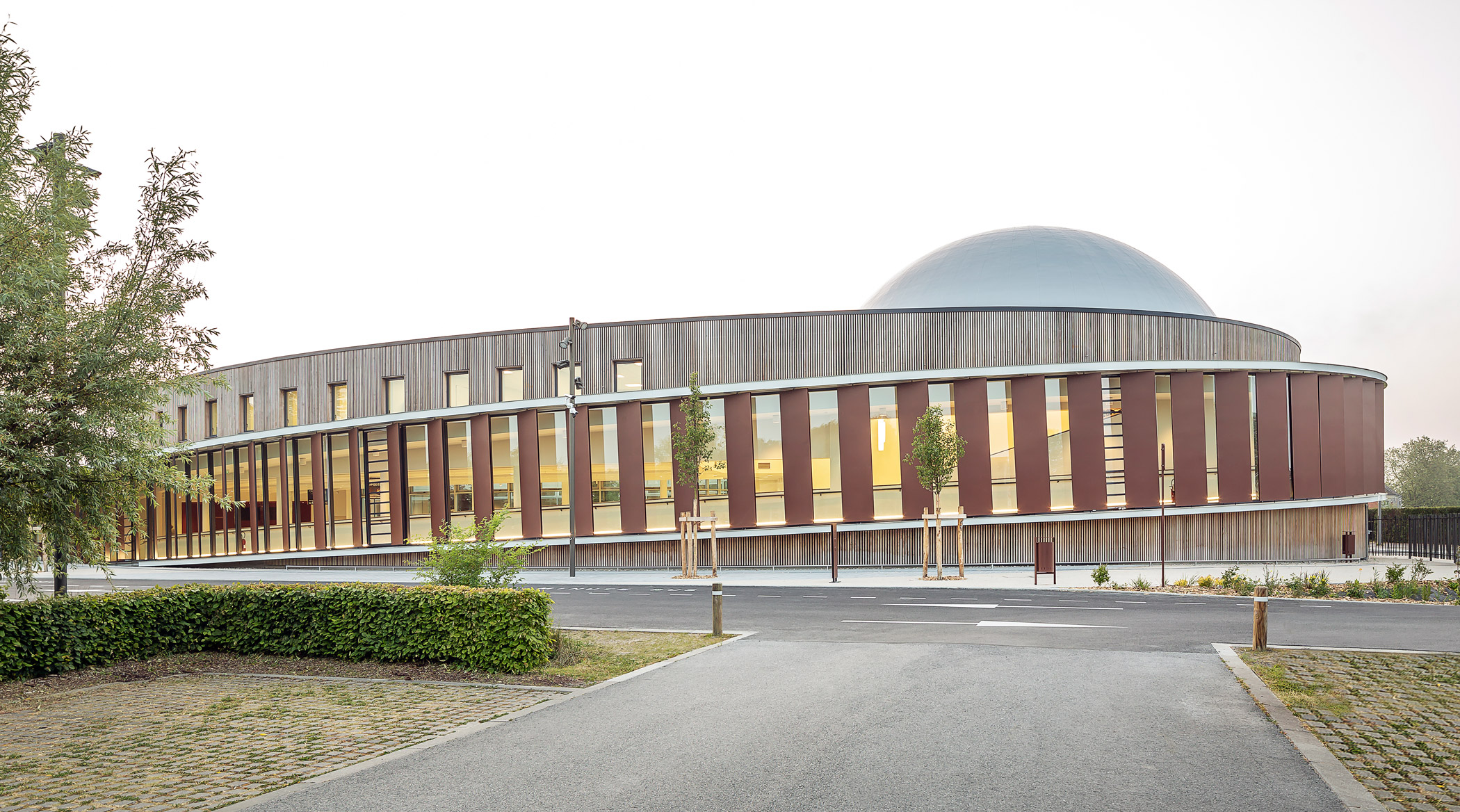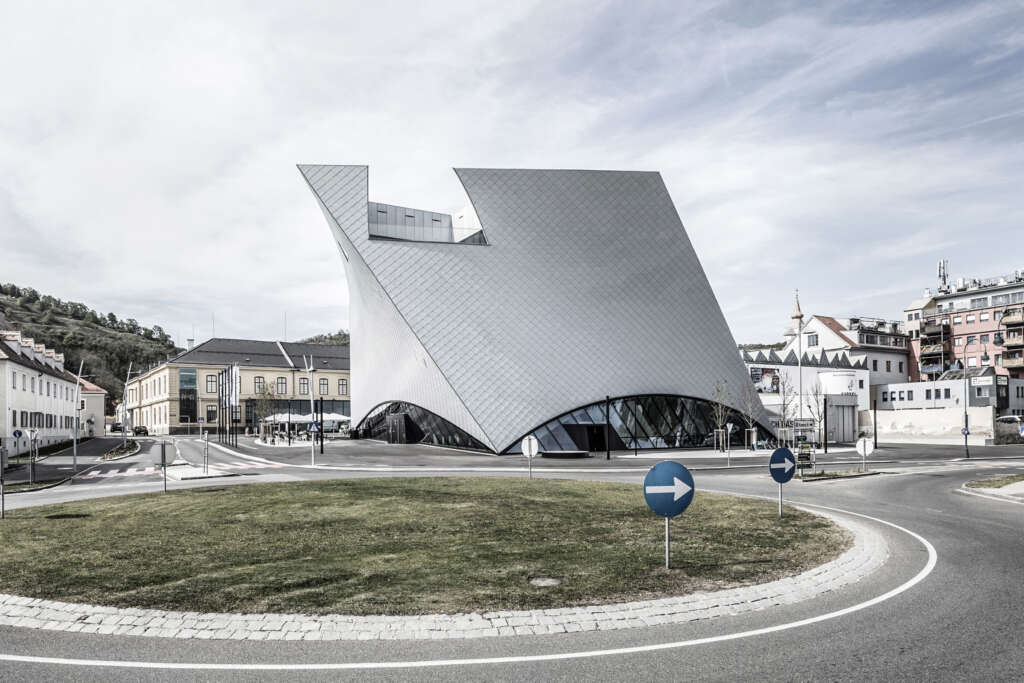
State Gallery of Lower Austria
Architects: Marte.Marte Architects
Location: Krems, Austria
Type: Cultural
Year: 2019
Photographs: Roland Horn
The following description is courtesy of Marina Hämmerle. Krems – concentrated atmosphere on the broad Danube River, surrounded by gentle vineyards, criss-crossed by narrow lanes and attractive squares, and nourished by the soundscape of the Minorite church and the museums of the art mile (Kunstmeile), resounding to the ethnographic music of the Glatt & Verkehrt Festival, the cacophony of the tourists’ voices, and the avant-garde Danube Festival, and alternating tastes between Federspiel dry white wine and juicy apricots…. Not far from the shipping center, just two roundabouts away, another characteristic feature of the town is arising: the new State Gallery of Lower Austria – an astounding tour de force of architecture. If new possibilities are nothing other than realities waiting to be discovered, then marte.marte has definitely found them in a bold and daring way with their new state art museum. It requires an undaunted spirit and a great deal of courage to conceive, let alone plan, such a structure as the culmination of the art mile.
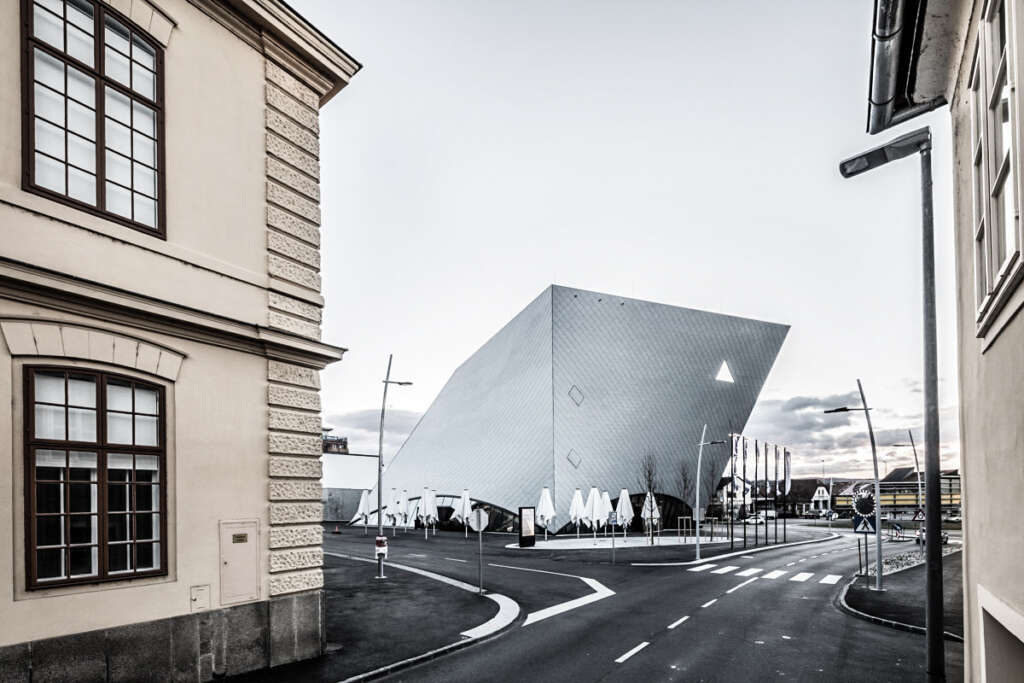
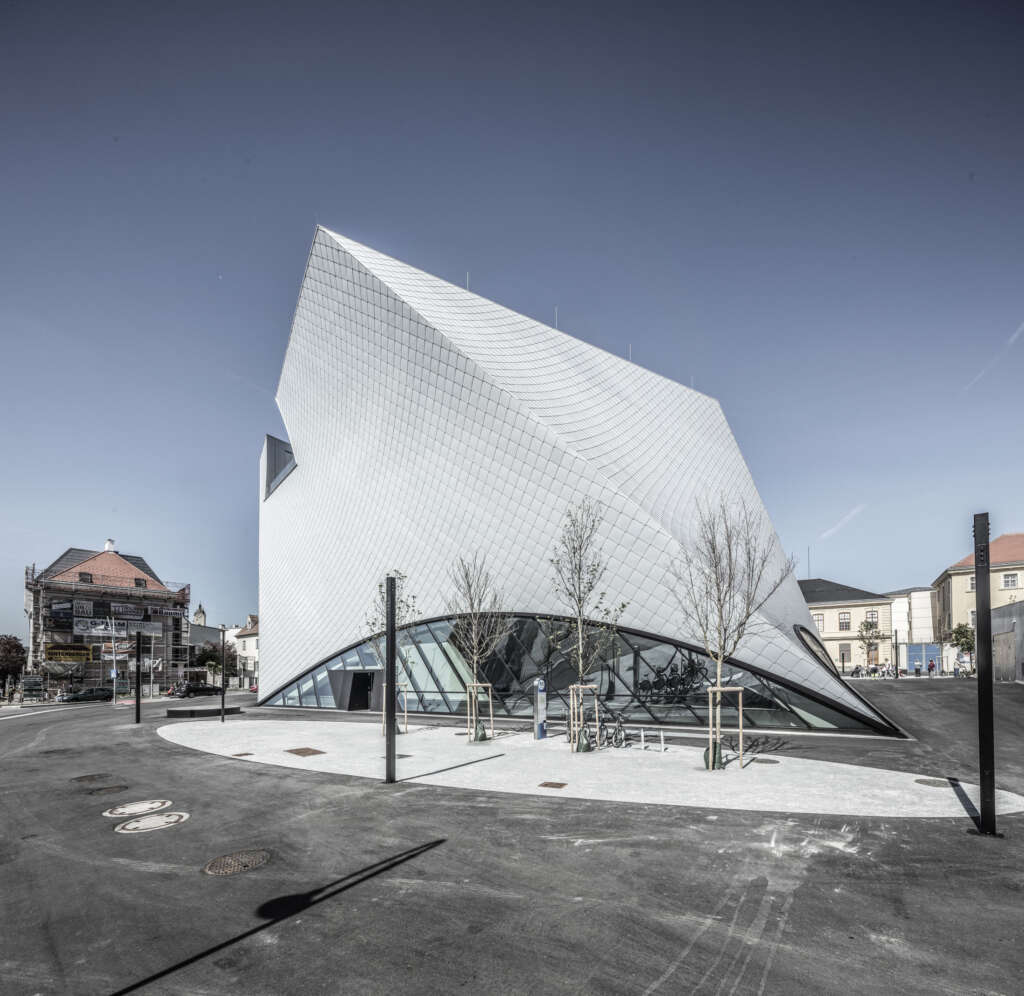
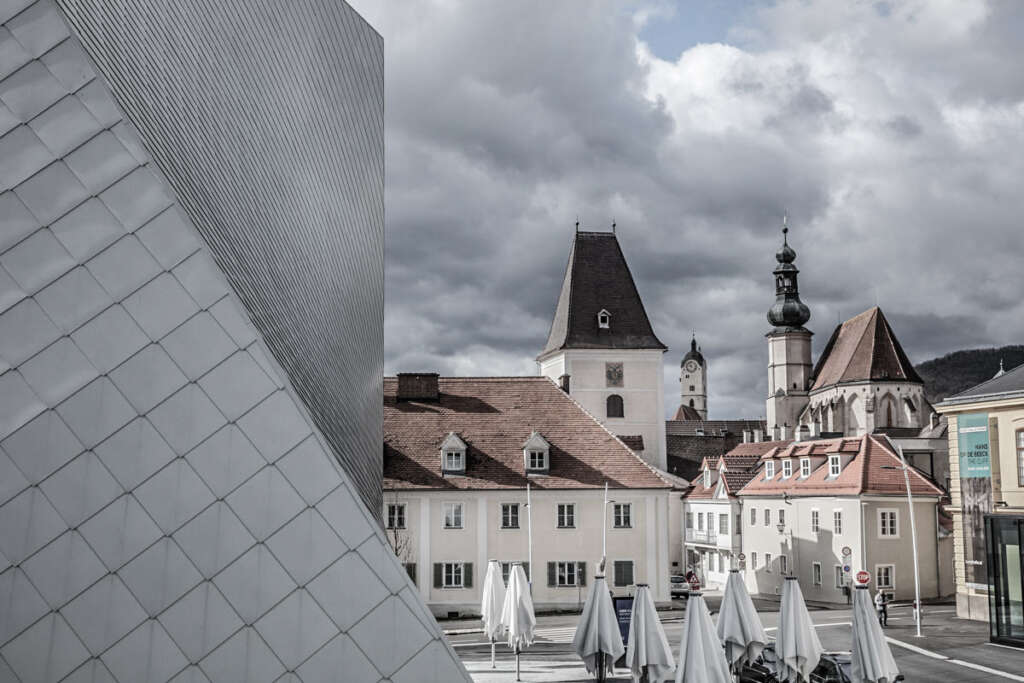
Caught in the crosshairs
Vis-à-vis from the austere Kunsthalle, designed by Adolf Krischanitz and built in the former tobacco factory of the Austrian tobacco monopoly, and next to the mimic Caricature Museum by Gustav Peichl with its playful saw-tooth roof, the solitary building by marte.marte makes an unmistakable artistic statement and joins forces with its location in a striking way. The structure, more of a sculpture than a building, eludes the appreciation of the viewer in their movement around the construction, alters its expression and shape from step to step, and resists being drawn to scale, opting instead to be a concrete manifestation of the interplay of forces. One is tempted to view the novel form as being unique – the torsion around the axis of the northwest corner of the building generates a multitude of hyperparabolic surfaces and the connecting lines of the two unequal squares of the ground and roof floors create spectacularly contorted surfaces which are difficult for the human eye to comprehend. The building, or better yet the sculpture, twists around its vertical axis, tapers towards the top, and thanks to a carved-out incision in the roof, provides a clear view in the direction of the Danube of the Göttweig Benedictine monastery which towers over the foothills of the Dunkelsteinwald Region. Apart from the four glazed arches on the ground floor, it is this gesture which connects the interior of the building directly with the genius loci, thus allowing one of the most important landmarks of the Wachau Region to achieve its full effect, seeing as the historical monastery is caught directly between the crosshairs of the viewers. Otherwise, the malleable construction seems hermetic from the outside. The scale armour covering the building, composed of matte zinc rhombuses which must practically be attached piece by piece from top to bottom, transforms the “four-legged” concrete giant into an armadillo in knight’s armour.
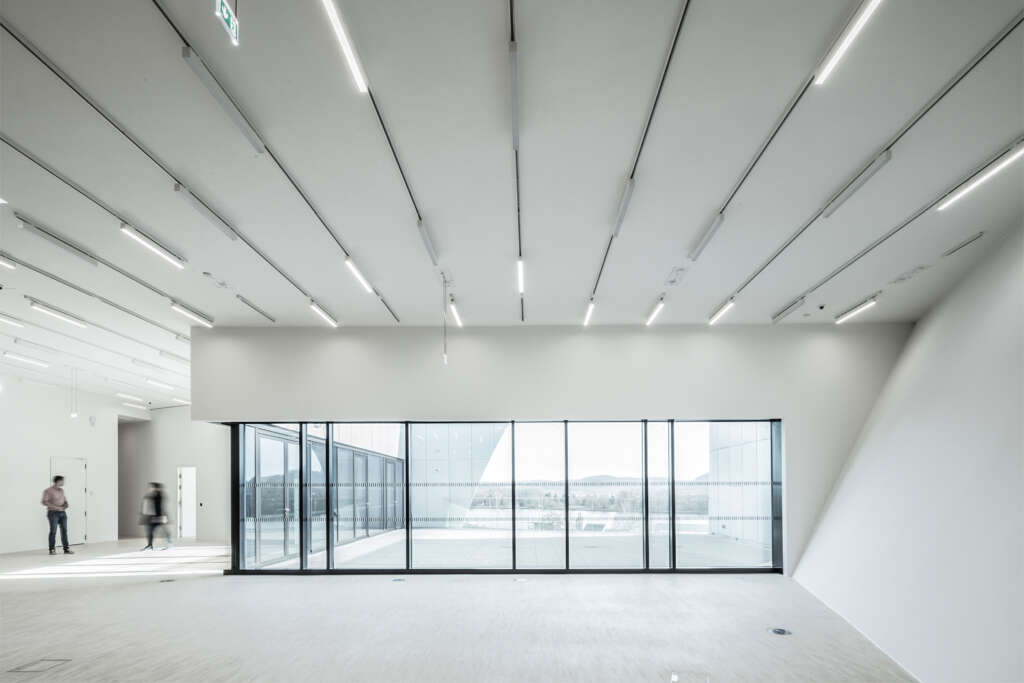
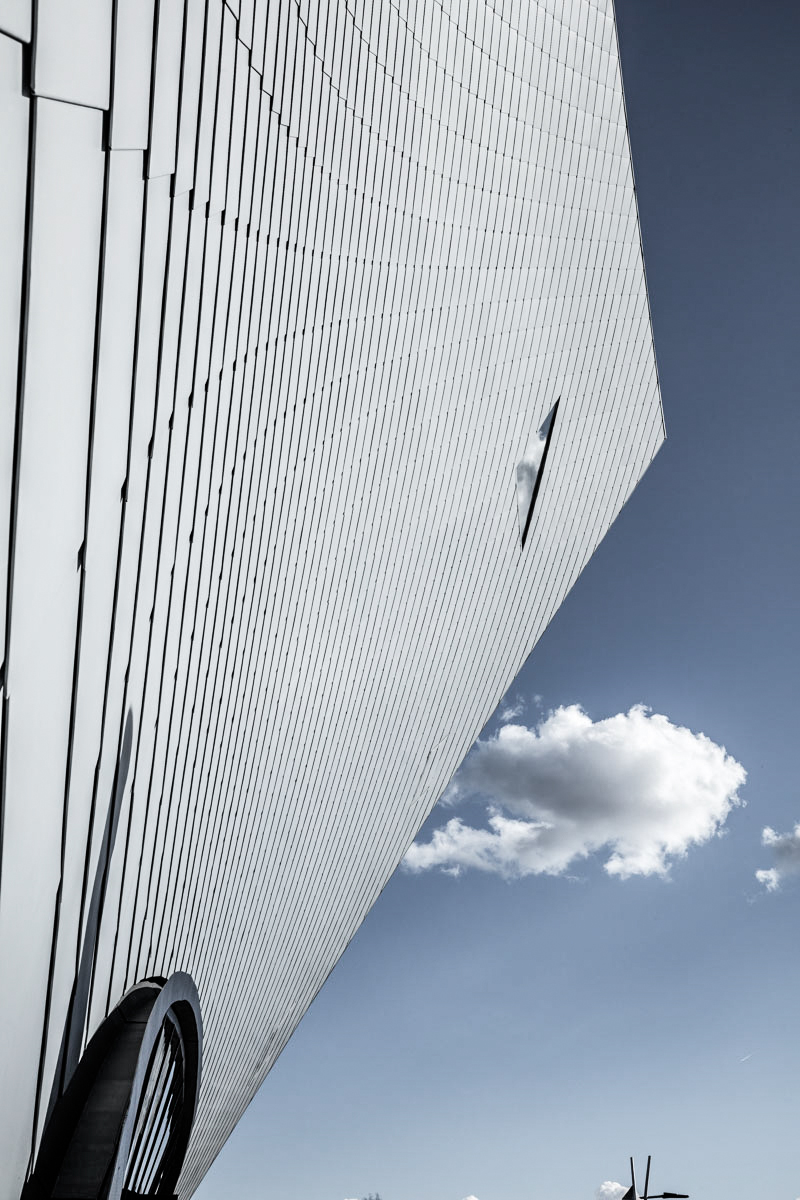
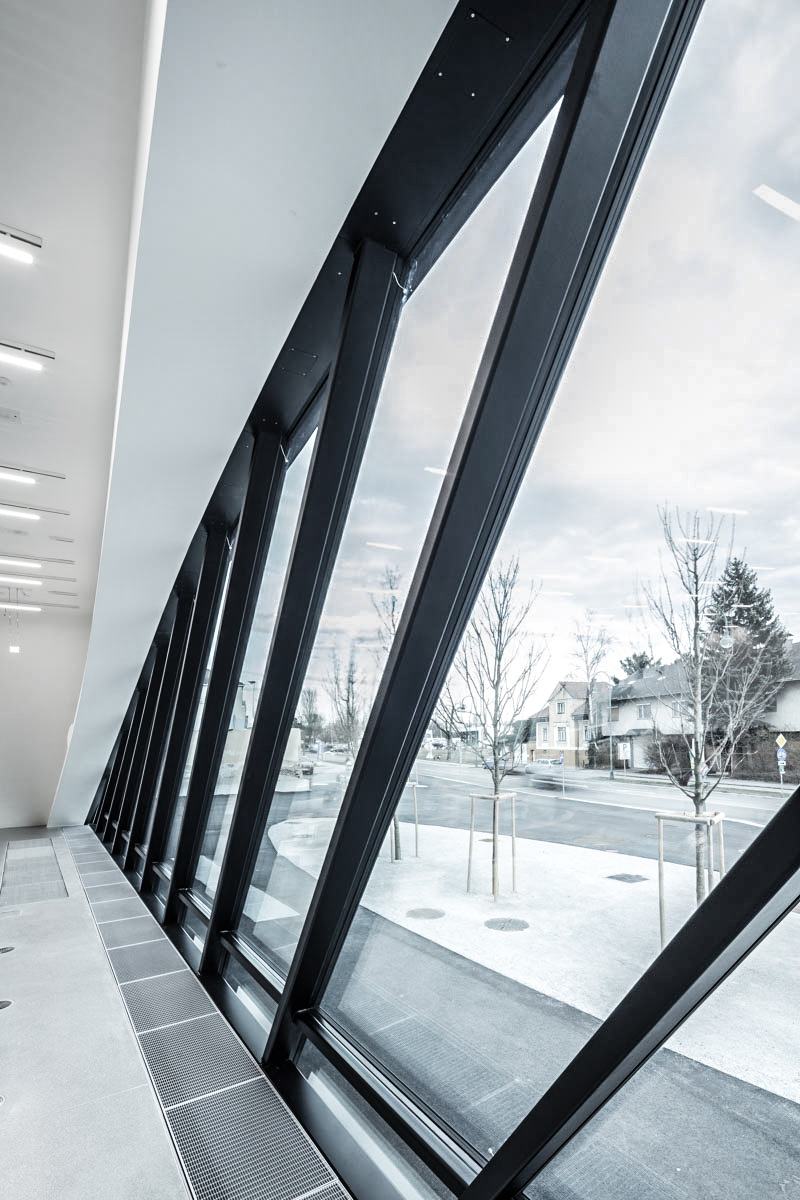
A vision in concrete
There it is once again, the irrefutable fortified nature of marte.marte’s structures, which seem designed to defend the individual’s or society’s set of values with a gestural, enclosed construction. What sets this building apart from other projects of the Vorarlberg firm, however, is its underlying dynamic energy. Their vision of the art museum in Krems is like a holographic image of a geometric shell turning boldly around itself. What on the one side appears to be an aligned surface is on the other an overhanging steep face. Depending on the angle, the surfaces seem to twist – the motion captured in the still image is brought to life again by the motion of the viewer. A sense of possibility leads to a sense of reality.
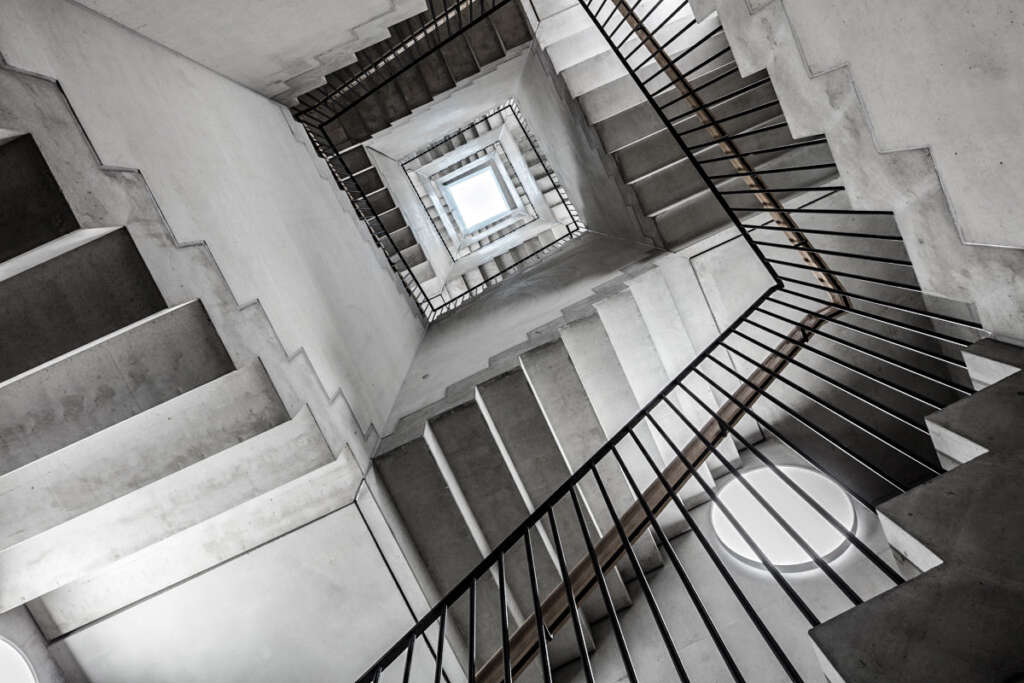

In the belly of the giant
The interior of the building is also full of surprises. The two concrete towers that make their way through the floors and form the vertical constant of the building are a point of reference, an aid to orientation, and Escher-like stairs in one. Two fire escape staircases join to form one DNA helix, which lead and confuse viewers at one and the same time. In conjunction with the powerful contortions of the exterior walls, every floor has its own unique layout. It seems as if the exhibition halls move from northeast to southwest. Everything is still under construction: the rough surfaces inside are being filled and sanded, and room-forming walls are being erected on the ground floor. Many features have yet to be revealed, and I’m excited to see how art will conquer these interior spaces and what the look and feel will ultimately be of what currently feels huge and unrestrained, as if I were walking in the belly of some gigantic creature …




